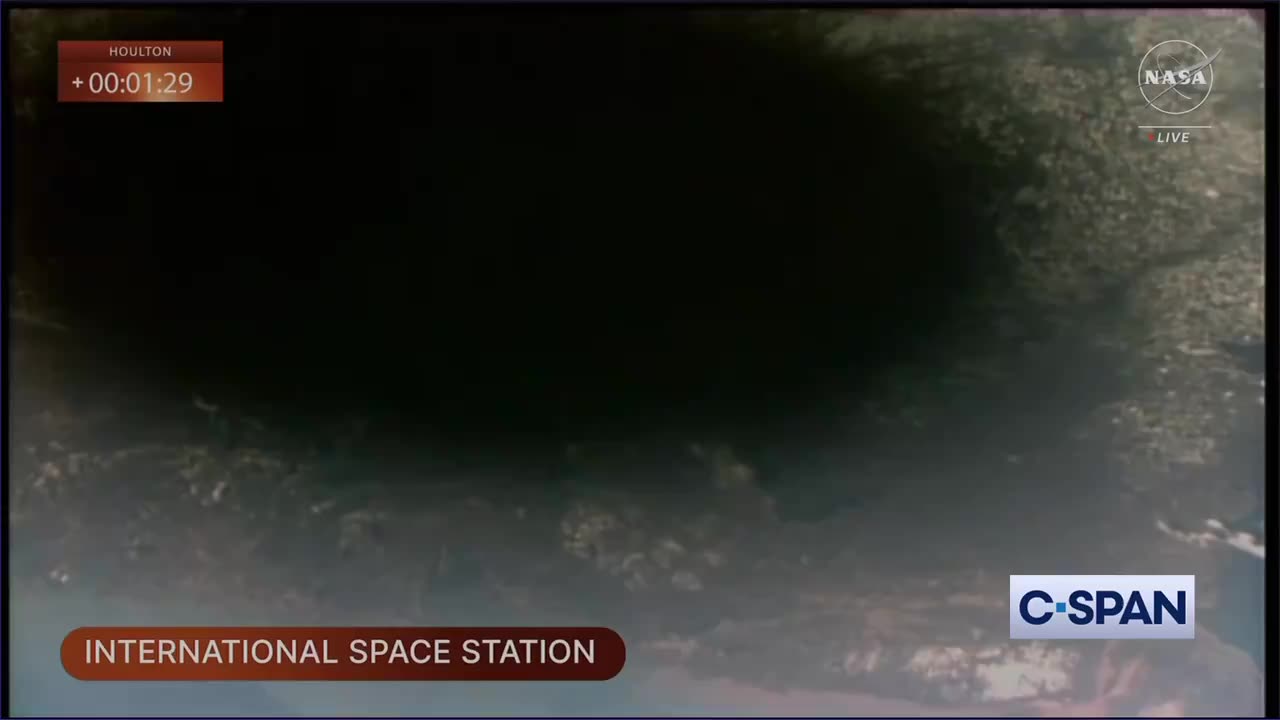Premium Only Content

Solar Eclipse as seen from the International Space Station
Solar Eclipse as seen from the International Space Station April 8, 2024
On April 8, 2024, a total solar eclipse moved across North America, passing over Mexico, the United States, and Canada. A total solar eclipse happens when the Moon passes between the Sun and Earth, completely blocking the face of the Sun. The sky will darken as if it were dawn or dusk.
Safety is the number one priority when viewing a total solar eclipse. Be sure you're familiar with when you need to wear specialized eye protection designed for solar viewing by reviewing these safety guidelines.
solar eclipse occurs when the Moon passes between Earth and the Sun, thereby obscuring the view of the Sun from a small part of Earth, totally or partially. Such an alignment occurs approximately every six months, during the eclipse season in its new moon phase, when the Moon's orbital plane is closest to the plane of Earth's orbit. In a total eclipse, the disk of the Sun is fully obscured by the Moon. In partial and annular eclipses, only part of the Sun is obscured. Unlike a lunar eclipse, which may be viewed from anywhere on the night side of Earth, a solar eclipse can only be viewed from a relatively small area of the world. As such, although total solar eclipses occur somewhere on Earth every 18 months on average, they recur at any given place only once every 360 to 410 years
If the Moon were in a perfectly circular orbit and in the same orbital plane as Earth, there would be total solar eclipses once a month, at every new moon. Instead, because the Moon's orbit is tilted at about 5 degrees to Earth's orbit, its shadow usually misses Earth. Solar (and lunar) eclipses therefore happen only during eclipse seasons, resulting in at least two, and up to five, solar eclipses each year, no more than two of which can be total. Total eclipses are rarer because they require a more precise alignment between the centers of the Sun and Moon, and because the Moon's apparent size in the sky is sometimes too small to fully cover the Sun.
The International Space Station (ISS) is a large space station assembled and maintained in low Earth orbit by a collaboration of five space agencies: NASA (United States), Roscosmos (Russia), JAXA (Japan), ESA (Europe), CSA (Canada), and their contractors. ISS is the largest space station ever built. Its primary purpose is performing microgravity and space environment experiments
-
 1:01
1:01
Outer Space
3 months agoVideo of Starship Super Heavy Booster landing as seen from Mexico
3333 -
 LIVE
LIVE
Right Side Broadcasting Network
4 hours agoLIVE: President Trump Participates in First Cabinet Meeting - 2/26/25
7,697 watching -
 LIVE
LIVE
vivafrei
4 hours agoCanadian Liberal Leadership Race TO THE BOTTOM! Florida Prosecutor Claims SELF DEFENSE? & MORE!
1,486 watching -
 LIVE
LIVE
Simply Bitcoin
1 hour agoNEW REPORT PROVES This Bitcoin Bull Run is DIFFERENT!! | EP 1191
229 watching -
 LIVE
LIVE
The Charlie Kirk Show
1 hour agoJudges vs. The People + Is DOGE Enough? + Fort Knox | Rep. Roy, Glenn, Plume, Posobiec | 2.26.2025
4,455 watching -

The White House
3 hours agoPresident Trump Hosts First Cabinet Meeting, Feb. 26, 2025”
14.9K11 -
 58:16
58:16
The Dan Bongino Show
3 hours agoShake-Up In The White House Press Room (Ep. 2431) - 02/26/2025
638K812 -
 1:00:00
1:00:00
The Rubin Report
2 hours agoDem Looks Visibly Angry as Stephen A. Smith Points Out Failures to His Face
40.1K21 -
 LIVE
LIVE
Benny Johnson
2 hours ago🚨 Trump's First White House Cabinet Meeting LIVE Right Now | Massive News Breaking
11,408 watching -
 2:05:04
2:05:04
Steven Crowder
4 hours agoTrump Keeps Delivering | This Week’s 3 Big Wins Explained
379K171